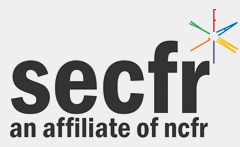Proposal Focus
Research
Presentation Type
Presentation
Abstract
The current study identified subgroups of individuals regarding nonresident fathers’ childcare provision by taking the growth mixture modeling approach (GMM) and Fragile Families and Child Wellbeing Study (FFCWS; wave 1 to wave 5). The three-profile model was the most fitted model, where Profile 1 (n = 548, 68.7%) showed the lowest childcare across waves, and Profile 3 (n = 106, 13.3%) was the most involved group, and the Profile 2 (n = 144, 18.0%) showed moderate levels of care provision (see Figure 1). Follow-up analysis revealed that the profiles significantly differed on child gender and the fathers’ education level; participants were more likely to be in the Profile 3 when the child was boy and fathers had higher education achievement.
Keywords
father involvement, latent growth modeling, MANOVA
Location
Wyndsor II
Start Date
3-4-2020 11:45 AM
End Date
3-4-2020 12:35 PM
Nonresident Fathers’ Care-Provision Trajectory: Growth Mixture Modeling Approach
Wyndsor II
The current study identified subgroups of individuals regarding nonresident fathers’ childcare provision by taking the growth mixture modeling approach (GMM) and Fragile Families and Child Wellbeing Study (FFCWS; wave 1 to wave 5). The three-profile model was the most fitted model, where Profile 1 (n = 548, 68.7%) showed the lowest childcare across waves, and Profile 3 (n = 106, 13.3%) was the most involved group, and the Profile 2 (n = 144, 18.0%) showed moderate levels of care provision (see Figure 1). Follow-up analysis revealed that the profiles significantly differed on child gender and the fathers’ education level; participants were more likely to be in the Profile 3 when the child was boy and fathers had higher education achievement.
![Southeastern Council on Family Relations Conference [2018-2020]](/assets/md5images/a0d3661d5139dc9b769a57be6f085156.png)

